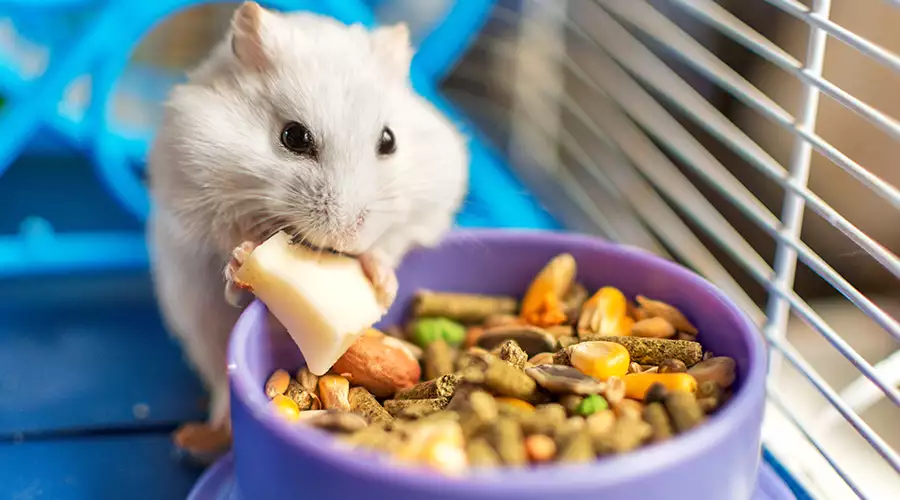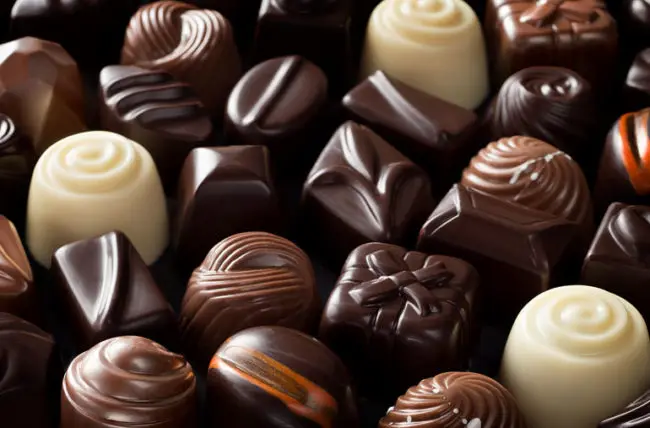Introduction
As a hamster owner, one of the most important aspects of caring for your pet is making sure they have a healthy, balanced diet. In this comprehensive guide, we’ll explore the various food options available for your hamster, discuss their nutritional needs, and provide tips on how to create a meal plan that’ll keep them happy and healthy. We promise this guide will be informative, easy to understand, and perfect for both new and experienced hamster owners.
Understanding Your Hamster’s Nutritional Needs
Before we dive into the various food options for your hamster, it is essential to understand their nutritional needs. Hamsters are omnivores, which means they consume both plant and animal-based foods. Their diet should consist of a balance of proteins, carbohydrates, fats, vitamins, and minerals. Here’s a quick breakdown of the nutrients your hamster needs:

Protein
Protein is vital for the growth, repair, and maintenance of a hamster’s body tissues. It plays a significant role in various bodily functions, such as enzyme production and hormone regulation. Approximately 15-20% of a hamster’s diet should contain protein, derived from both plant and animal sources.
Carbohydrates
Serves as the primary source of energy for your hamster’s daily activities. They can be found in various grains, seeds, and vegetables that make up a significant portion of their diet. Complex carbohydrates, such as those found in 0whole grains, are preferable, as they provide a steady source of energy and are easier to digest.
Fats
Fats are essential for energy storage and the absorption of fat-soluble vitamins (A, D, E, and K). They also contribute to maintaining a healthy coat and skin. Hamsters require a moderate amount of fat in their diet, approximately 5-10%, with a focus on healthy sources like seeds and nuts.
Fiber
Fiber plays a crucial role in maintaining a healthy digestive system for your hamster. It helps regulate bowel movements and prevent digestive issues such as constipation. Hamsters require a diet that contains about 8-15% fiber, which can be found in various plant-based foods, such as vegetables and whole grains.
Vitamins and Minerals
These are necessary for various bodily functions, such as immunity, bone health, and metabolism. Hamsters require a balanced intake of vitamins and minerals, which can be found in a combination of commercial hamster food, fresh fruits, vegetables, and occasional animal-based protein sources.
What Can I Feed My Hamster?
As a hamster owner, it is understandable to worry about what to feed your hamster, since we want to keep our little friends healthy and happy. One of the best ways to do this is by giving them a well-balanced and nutritious diet that caters to their specific dietary needs. If you’re a new hamster owner or just looking to spice up your pet’s mealtime, I’ve got you covered! Here are different types of foods that your hamster 🐹 can safely enjoy and thrive on🥦🍎:

1. Commercial Hamster Food
One of the easiest ways to ensure your hamster gets the nutrients they need is to feed them a high-quality commercial hamster food. These foods are specially formulated to meet the dietary needs of hamsters and typically come in the form of pellets, seed mixes, or lab blocks.
Pellets
Hamster pellets are small, compressed pieces of food made from a mixture of grains, seeds, and other ingredients. They are designed to provide a balanced diet and prevent selective feeding, which can occur when hamsters pick out their favorite parts of a seed mix and leave the rest.
Seed Mixes
Seed mixes are a popular choice for hamster food and often include a variety of seeds, grains, and dried vegetables. While they can provide a balanced diet, it’s important to monitor your hamster’s eating habits to ensure they are consuming all the components of the mix and not just their favorite parts.
Lab Blocks
Lab blocks are a type of specially formulated food that are nutritionally complete and designed for several animals, including hamsters. They are typically more expensive than pellets or seed mixes but can be a good option for ensuring your hamster gets all the nutrients they need.

2. Fresh Foods
Hamsters can benefit from fresh foods in their meal plan, as it provides the essential nutrients they need. Some of the best fresh foods recommended for hamsters include:
Leafy greens
Spinach, kale, and romaine lettuce are excellent sources of vitamins and minerals for your hamster.
Vegetables
Broccoli, cauliflower, cucumber, and bell peppers are safe and nutritious options for your hamster.
Hay
Hay is an important part of a hamster’s diet. It aids in digestion and helps wear down their constantly growing teeth. Timothy hay or meadow hay are suitable choices.
Fruits
Fruits like apples (without seeds), pears, and bananas are high in natural sugars and should be given sparingly. Small pieces of fruit can be offered as an occasional treat, but keep in mind that excessive sugar intake can lead to obesity and diabetes in hamsters.
Cooked Lean Meats
Small amounts of cooked chicken or turkey (without seasoning) can provide additional protein for your hamster.
Whole grains
Cooked brown rice, barley, oats and even bread, can offer additional fiber and nutrients.
Remember to introduce new foods gradually and in small amounts to avoid upsetting your hamster’s digestive system.
3. Treats and Snacks

While treats and snacks should not make up a significant portion of your hamster’s diet, they can be a fun way to bond with your pet and provide them with some variety. Some healthy treat options include:
Nuts and seeds
Nuts like almonds, hazelnuts, and walnuts, and seeds like sunflower and pumpkin seeds are high in healthy fats, proteins, and essential nutrients. However, they are also calorie-dense, so offer them in very small quantities and not more than once or twice a week.
Insect protein
Insects such as grasshoppers, crickets, and mealworms are a natural source of protein for hamsters. You can purchase these insects dried or live from pet stores. Offer them occasionally to provide variety and additional protein to your hamster’s diet.
Boiled eggs
Eggs are an excellent source of protein and essential amino acids. I’d advise feeding your hamsters small pieces of boiled egg without any seasoning. This treat can be given once a week or less, as too much protein can lead to kidney issues in hamsters.
Plain tofu
Tofu is a low-fat, plant-based protein source that can be given as an occasional treat. Cut it into small pieces and ensure it is plain, without any added flavors or seasonings.
Foods to Avoid

There are some potentially harmful or toxic foods that should never be fed to your hamsters and should be avoided. These include:
Chocolate
Chocolate contains theobromine, which is toxic to hamsters. Ingesting even a small amount of chocolate can cause vomiting, diarrhea, and even death in hamsters.
Onions and Garlic
These contain thiosulfates, which are harmful to hamsters. They can cause digestive issues and damage red blood cells, leading to anemia.
Raw potatoes
Raw potatoes contain solanine, a compound potentially harmful to hamsters. Cooking the potatoes can help reduce the solanine content, but it’s best to avoid feeding them to your hamster altogether.
Citrus fruits
Citrus fruits are acidic and can cause stomach upset and diarrhea in hamsters. They should be avoided to prevent digestive issues.
Avocado
Avocado contains persin, a toxin that can be harmful to hamsters. Ingesting avocado can lead to respiratory distress, heart failure, and even death.
Bitter almonds
Bitter almonds contain a cyanide compound – glucoside amygdalin, which can be deadly to hamsters. Sweet almonds, however, are safe for hamsters to consume.
Raw rhubarb
Raw rhubarb contains oxalic acid, which can be toxic to hamsters and cause kidney problems.
Processed junk food
Foods like burgers, pizza, and its distant cousins are high in unhealthy fats and sugars, which can lead to obesity and other health issues in hamsters. Don’t feed these to your hamsters.
FAQs
Q: How often should I feed my hamster?
A: Hamsters should be fed daily, with fresh food available at all times. Be sure to remove any uneaten fresh food after 24 hours to prevent spoilage.
Q: Can I feed my hamster human food?
A: While some human foods are safe for hamsters, it’s important to research each food item before offering it to your pet. Always avoid processed or high-sugar foods, and opt for fresh, whole foods when possible.
Q: How much food should I give my hamster?
A: The amount of food your hamster needs will depend on their size, age, and activity level. As a general guideline, provide 1-2 tablespoons of commercial hamster food per day, along with small amounts of fresh foods.
Q: What are some signs that my hamster is not eating well?
A: If your hamster is not eating well, you may notice a decrease in activity, weight loss, or a lack of interest in food. Additionally, their feces may be smaller or less frequent than usual. If you notice any of these signs, it is important to consult with a veterinarian.
We hope you now have the knowledge of what, and what not to feed your hamsters. By combining a variety of the ‘safe’ foods we’ve highlighted in this post, you can ensure your hamster stays happy and healthy.
